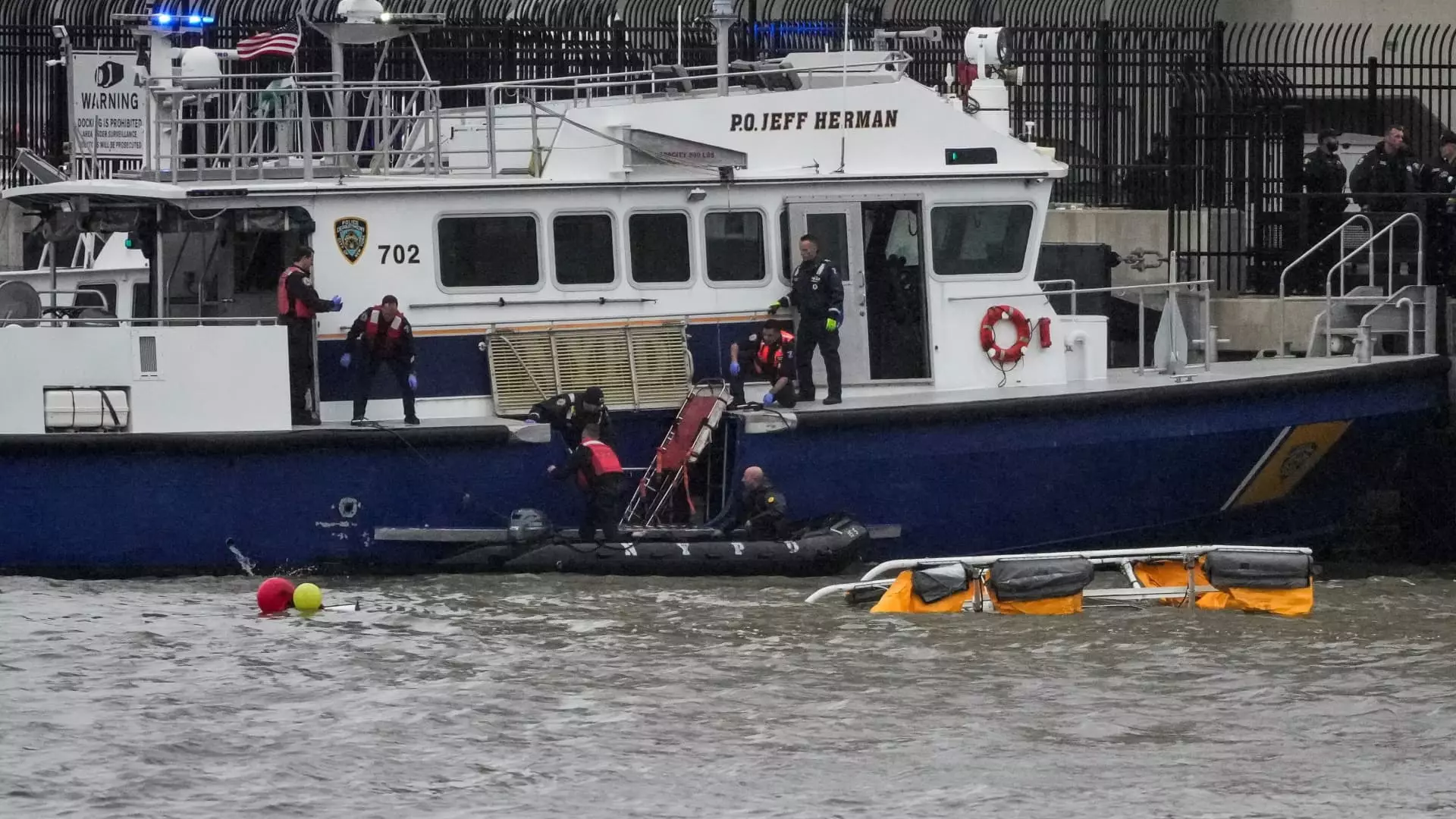The Hudson River, often characterized by its stunning views and vibrant city life, recently became the site of a harrowing tragedy. A helicopter crash off the coast of Manhattan not only shocked local residents but also raised questions about the safety of aerial transport in densely populated urban areas. With at least five out of the six passengers on board confirmed dead, the incident has left a somber mark on the community and called for a closer examination of helicopter regulations and flight standards.
A Chilling Sequence of Events
Witness accounts paint a vivid and unsettling picture of the moments leading up to the crash. Eyewitness reports describe a sudden failure, with one individual claiming to have witnessed the helicopter lose a propeller before its dramatic descent into the frigid waters of the Hudson. Such mechanical malfunctions are alarming not only for the passengers but also for those observing from the banks. The helicopter, identified as a Bell 206L-4 LongRanger, has been a staple in the aerial tour landscape, offering memorable views of New York City. However, the question remains: how often must we endure such tragic events before re-examining the protocols surrounding such flights?
The Aftermath and Emergency Response
Following the crash, emergency response teams surged into action, scouring the area for survivors and securing the crash site. The NYPD quickly issued alerts, warning residents to anticipate delays and the presence of emergency vehicles nearby. This incident serves as a stark reminder of the potential dangers associated with aerial tours, particularly in bustling urban settings where obstacles can heighten the likelihood of accidents. The lone survivor, pulled from the water, stands as a testament to the quick response of first responders, yet the loss of life remains heart-wrenching.
Flight Patterns Under Scrutiny
Recent flight data revealed that the ill-fated aircraft had been operating regularly between the Downtown Manhattan Heliport and other locales, indicative of its involvement in sightseeing tours. Such operations are commonplace and have historically been regarded as safe endeavors. However, the critical failure witnessed in this incident illuminates the need for rigorous inspections and maintenance checks. As the National Transportation Safety Board prepares to delve into a thorough investigation, the aviation community and the public alike await insights that could potentially prevent future tragedies.
Seeking Accountability and Safety Reforms
In light of the catastrophic event, calls for greater accountability and safety reforms in the aviation sector are becoming increasingly vocal. The tragic loss of life underscores the necessity for stringent regulations that govern helicopter operations, particularly in urban environments. Despite the inherent risks of flying, advancements in technology and safety protocols can mitigate potential dangers. It is incumbent upon regulatory bodies to ensure that commercial air travel, even in helicopter form, adheres to the highest safety standards.
As the investigation unfolds, the tragedy of the Hudson River helicopter crash serves as a crucial moment for reflection—one that may lead to significant changes in the way aerial tours are conducted in the future.


Leave a Reply